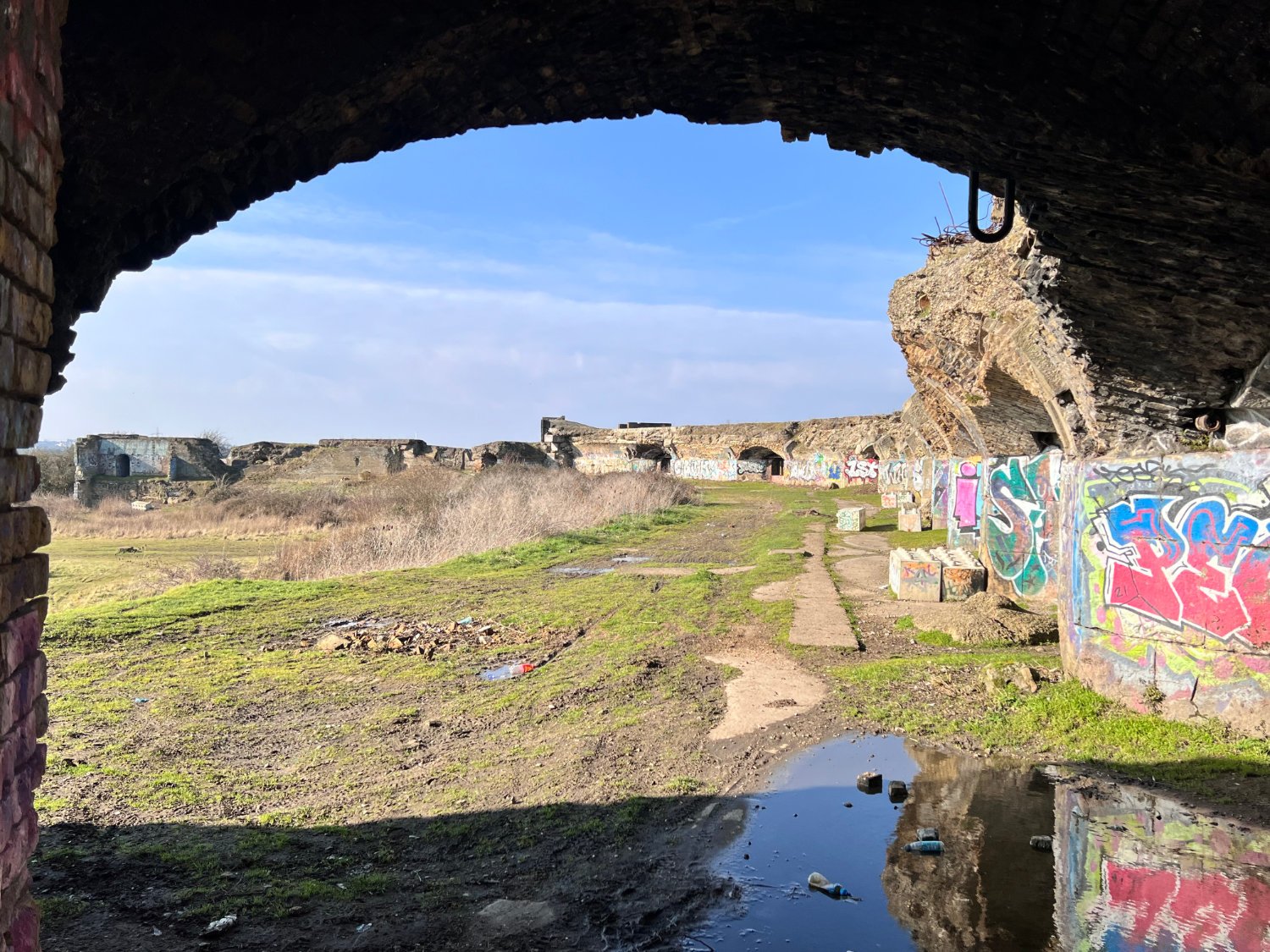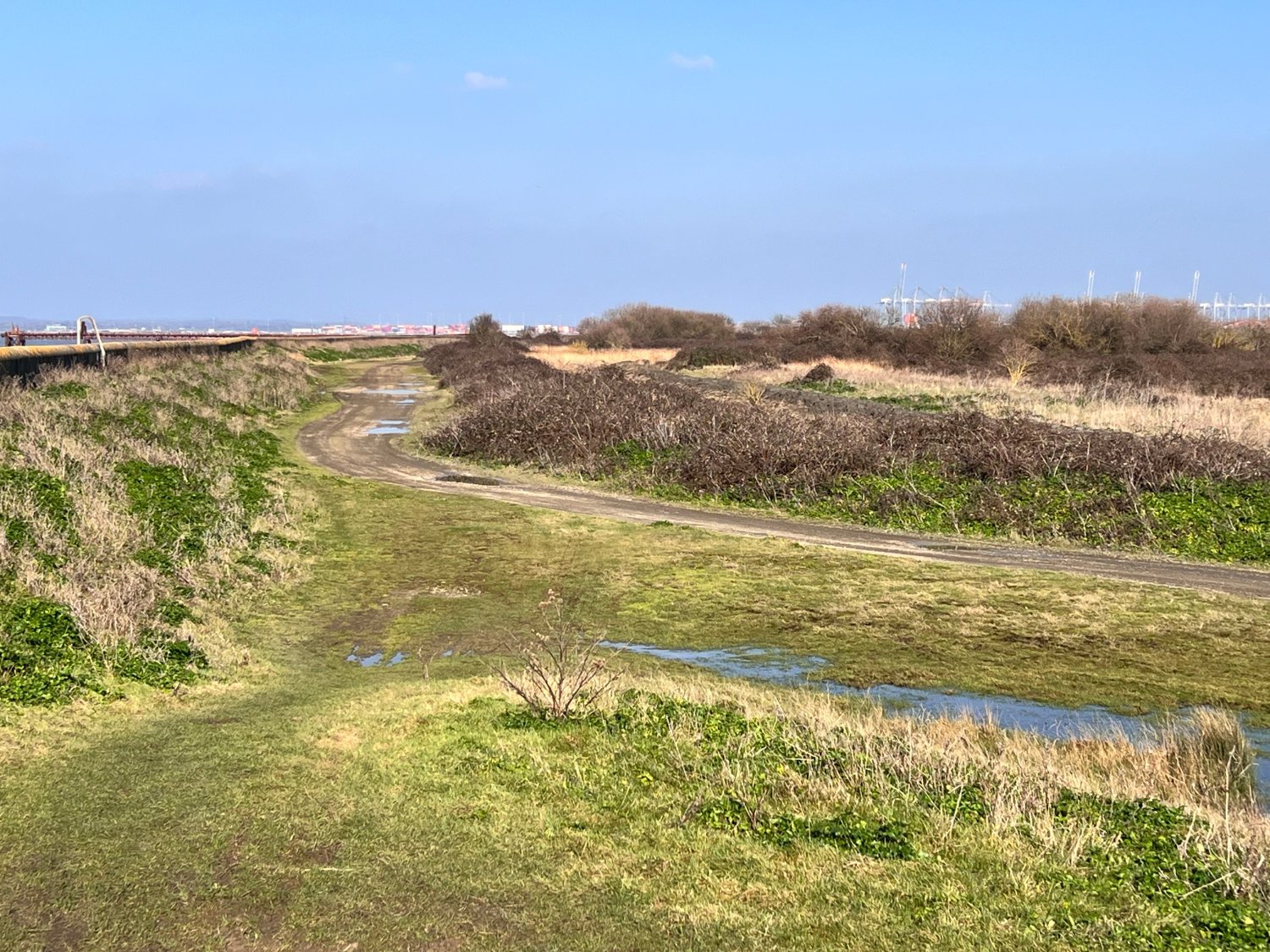50km The Gravel Trails of the Hoo
Cliffe marshes, Hoo Peninsula
Ride Overview
I love this ride, more than any of the rides listed around London’s boundary. It’s where I come when the city’s buzz becomes too much. The Hoo Peninsula is a magic and remote place and its beauty is enhanced by the fact that it is a mere 35 minutes by train from Central London. It’s an open and empty land, where you can feel the sea on your skin and watch ships and sheep as they move over the salt marshes. The riding is often rough, in keeping with this moody and mysterious place. And for those curious about the history of the place, you’ll pass medieval churches immortalised by Charles Dickens (who lived nearby), old Victorian forts, a torpedo launcher and blast walls from the time when the peninsula was a weapons testing area.
Revised February 2025
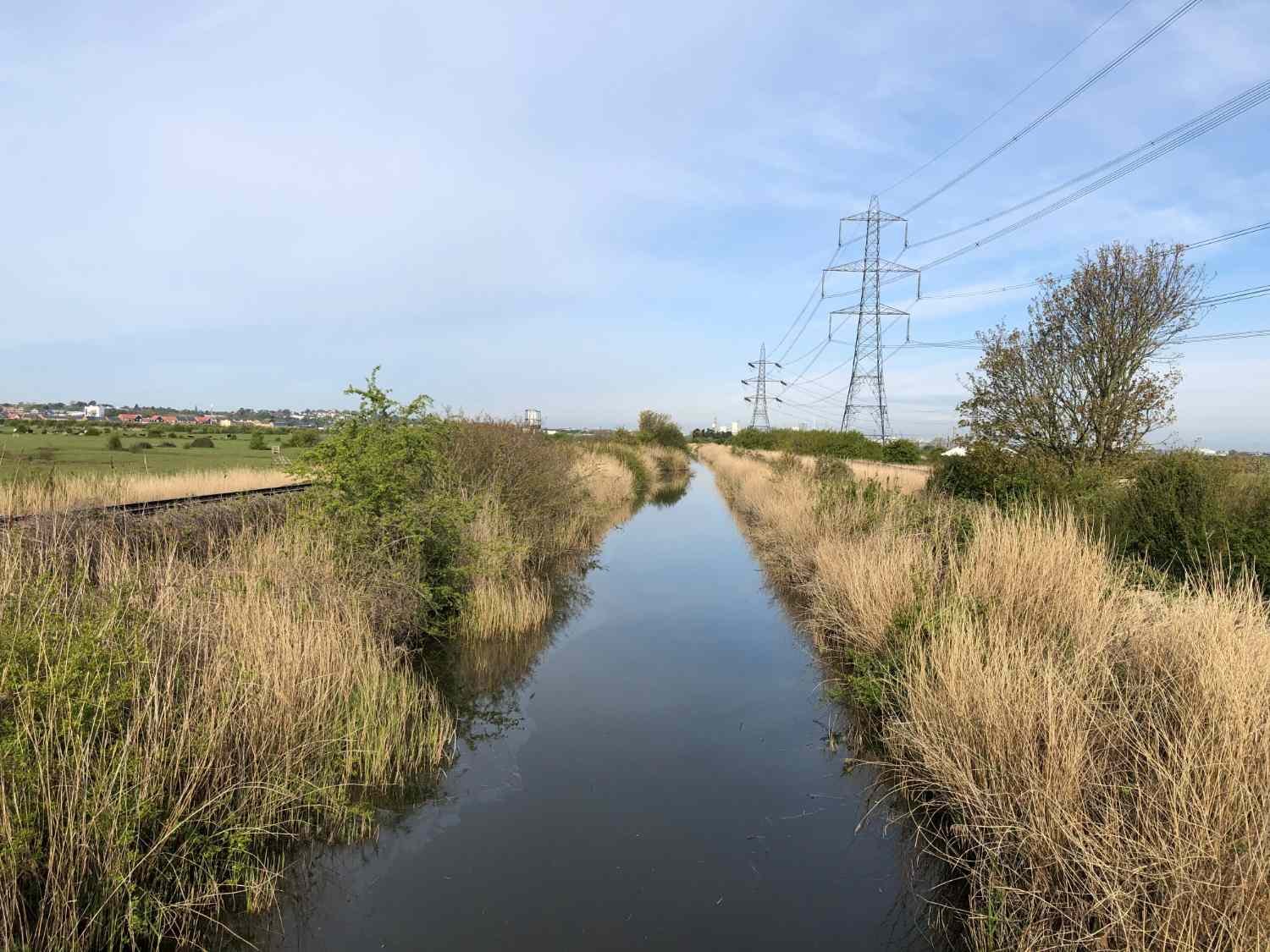

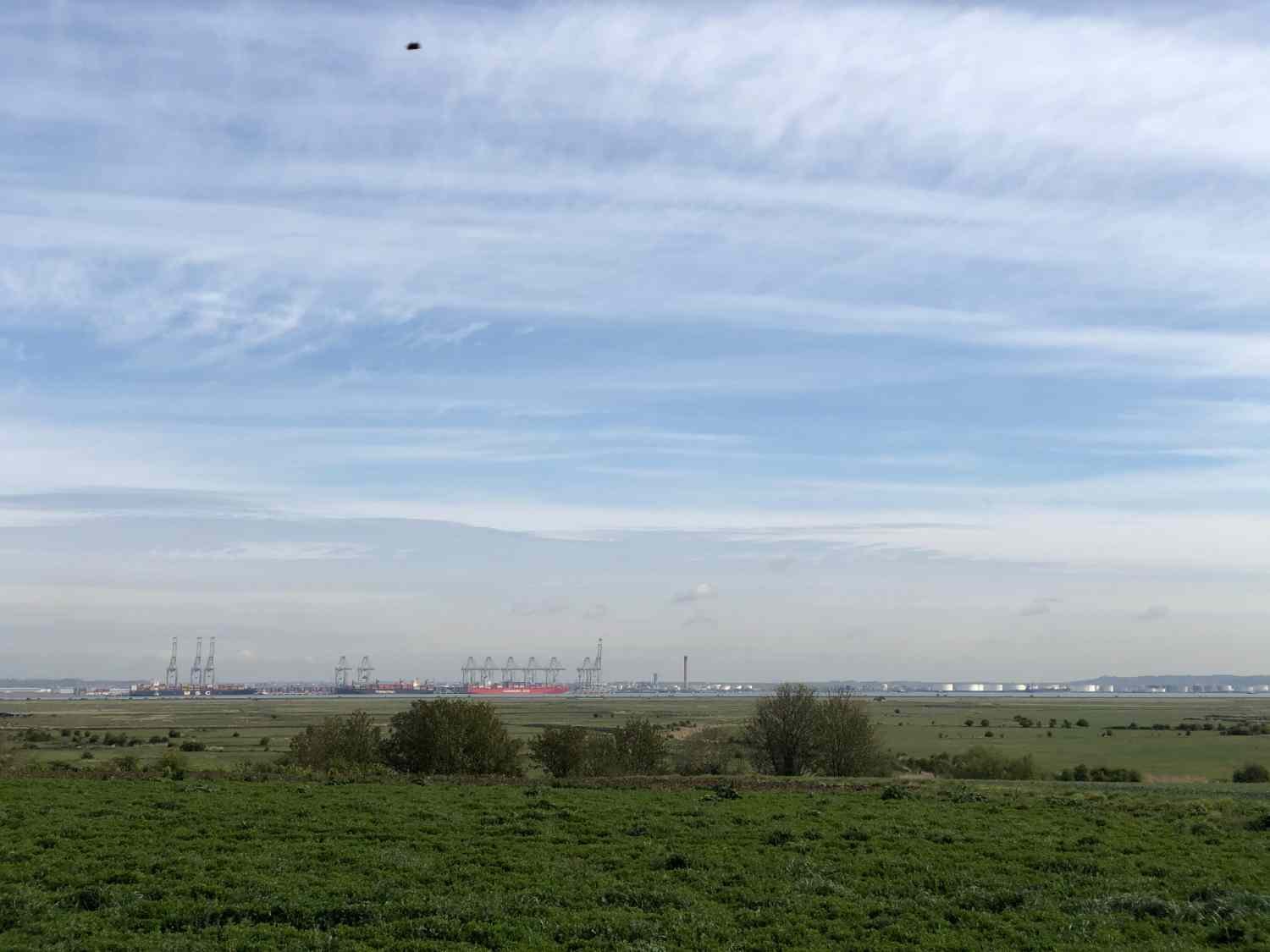


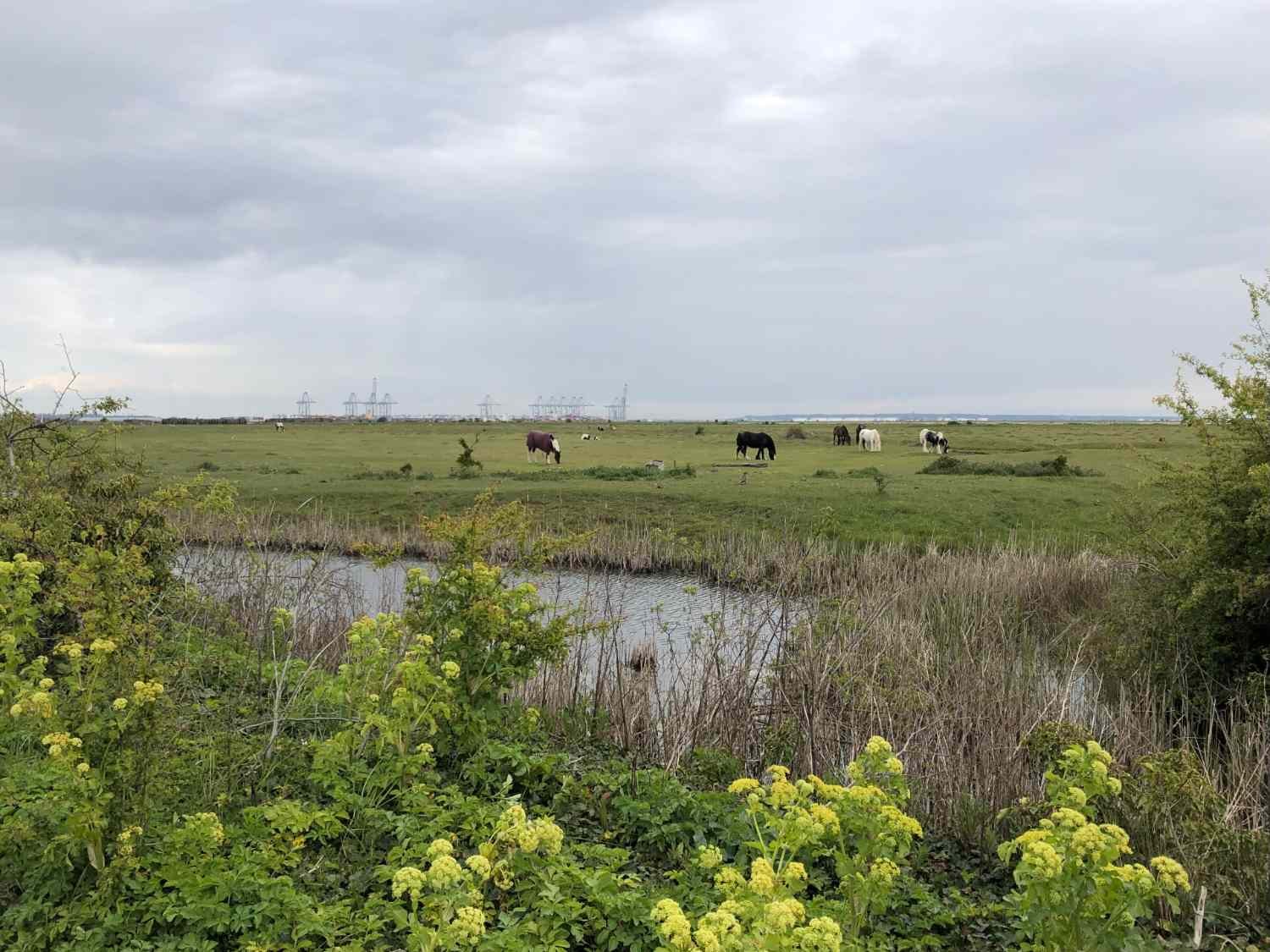



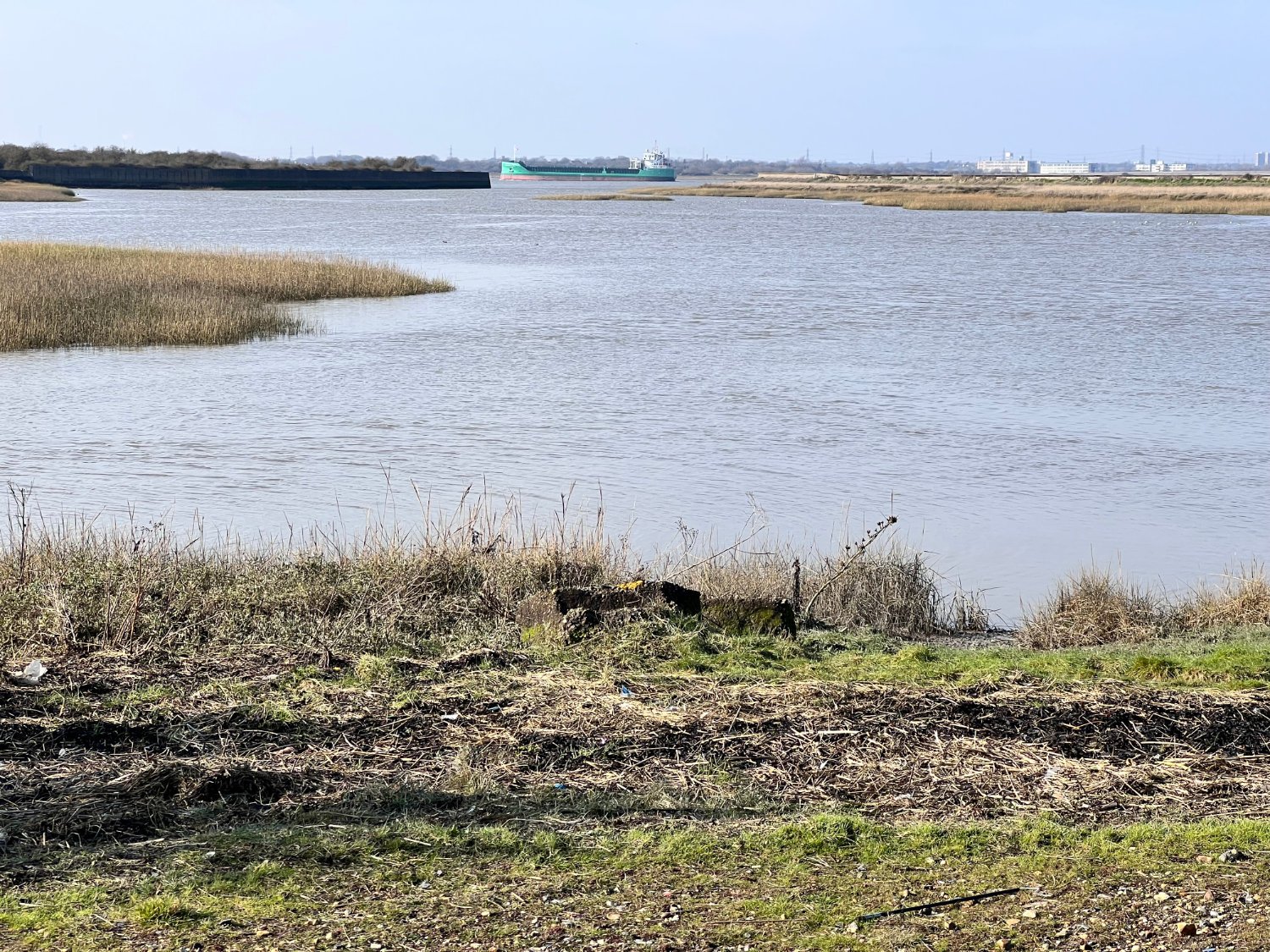
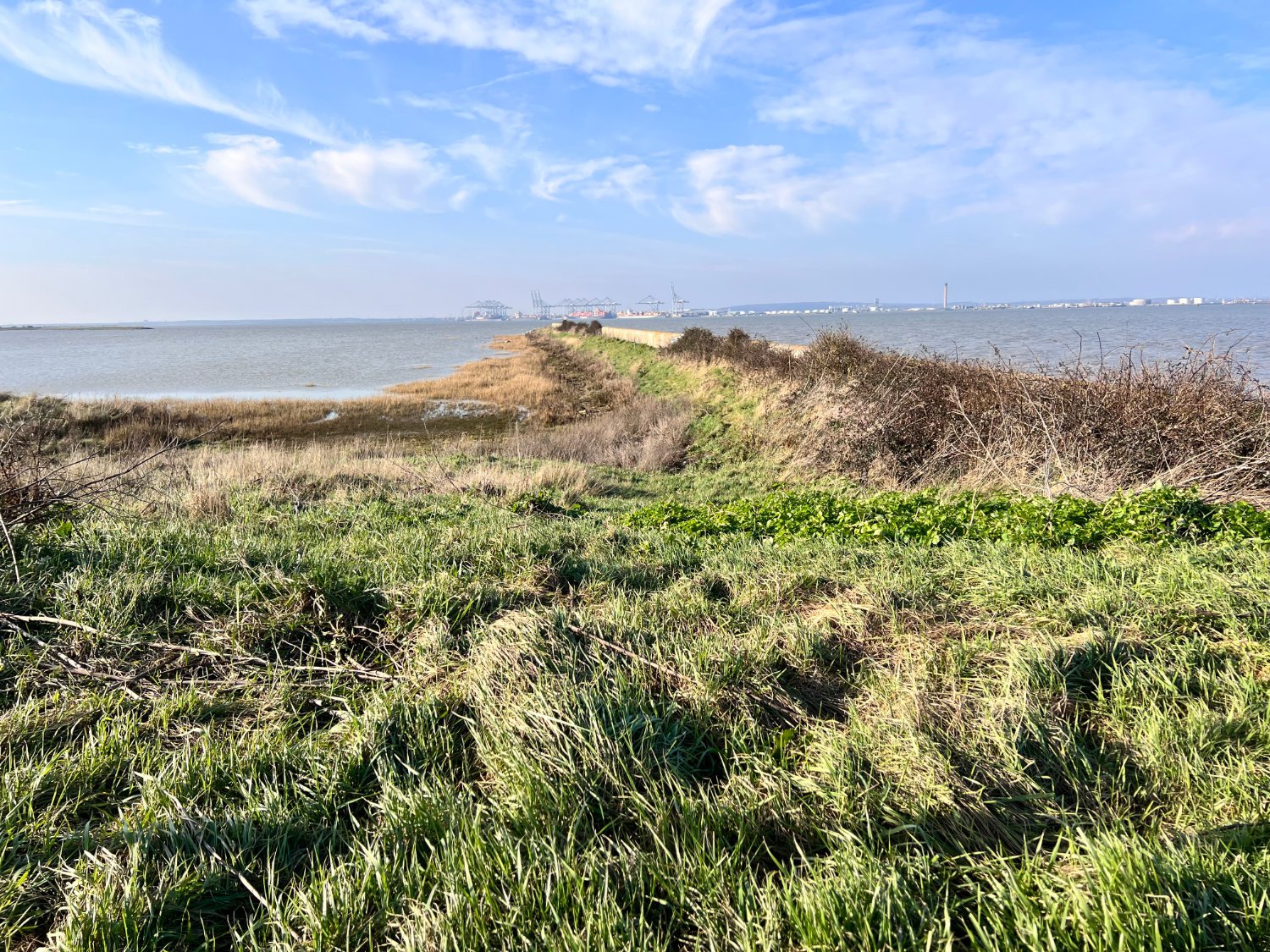
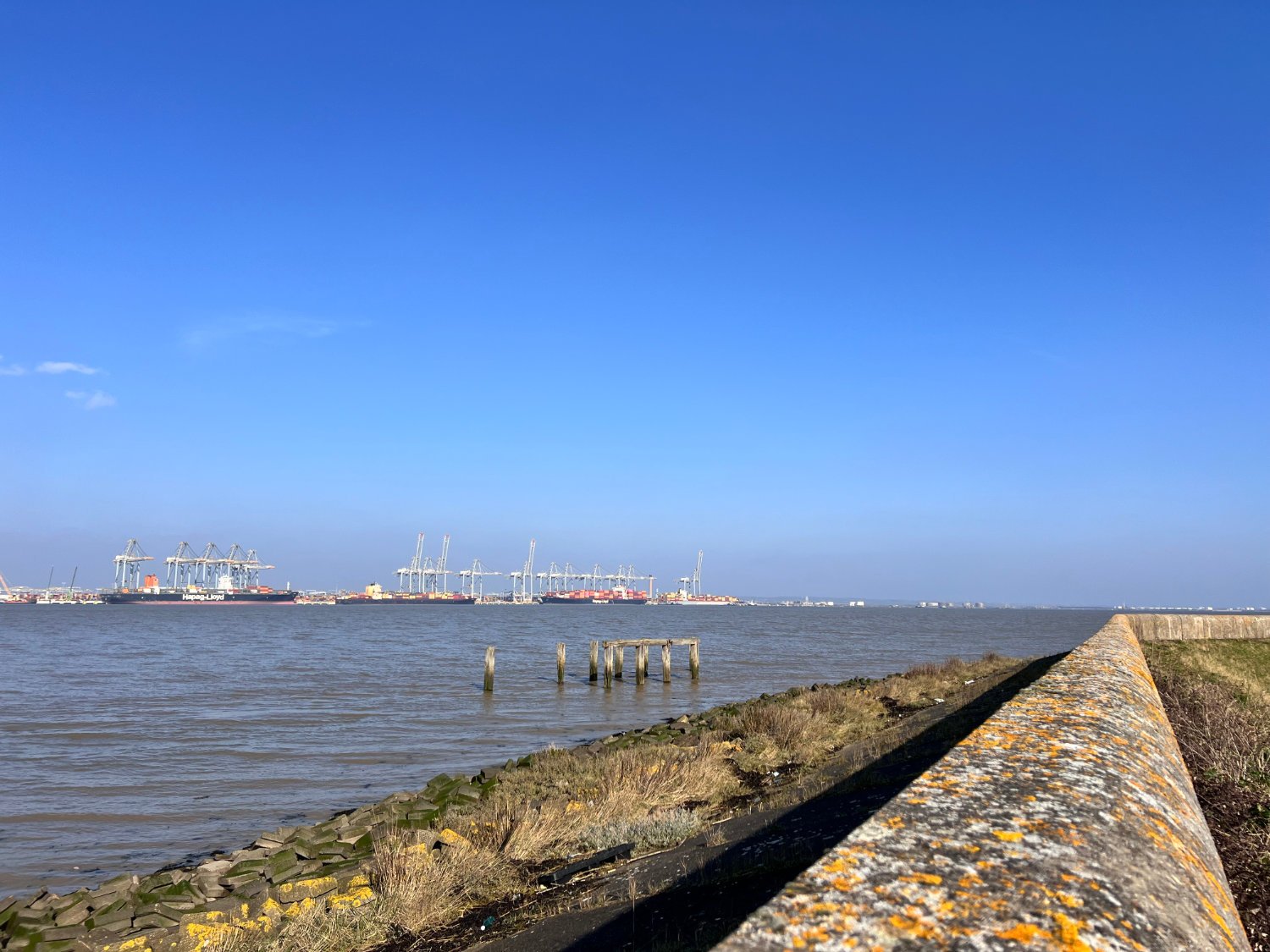

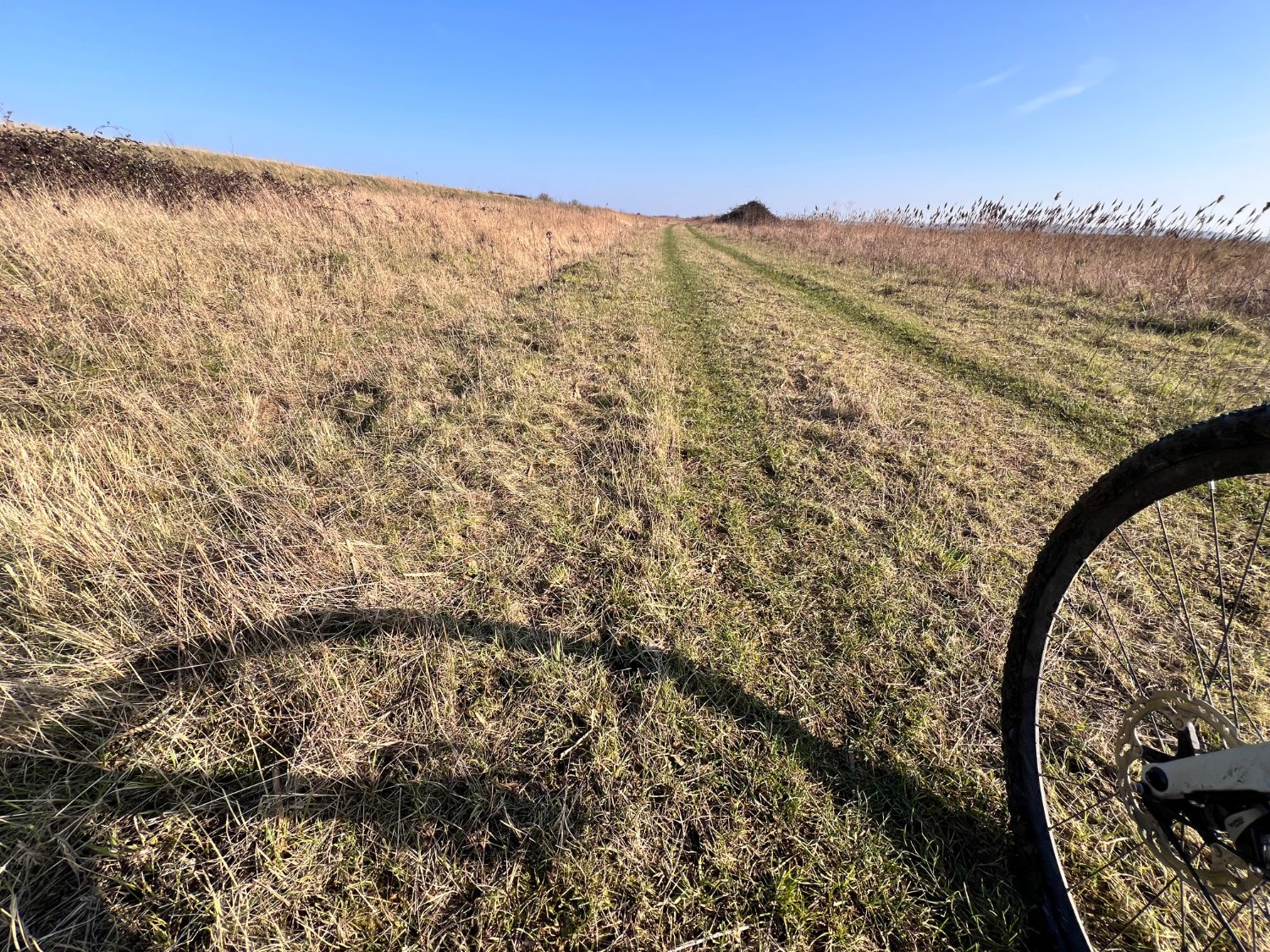
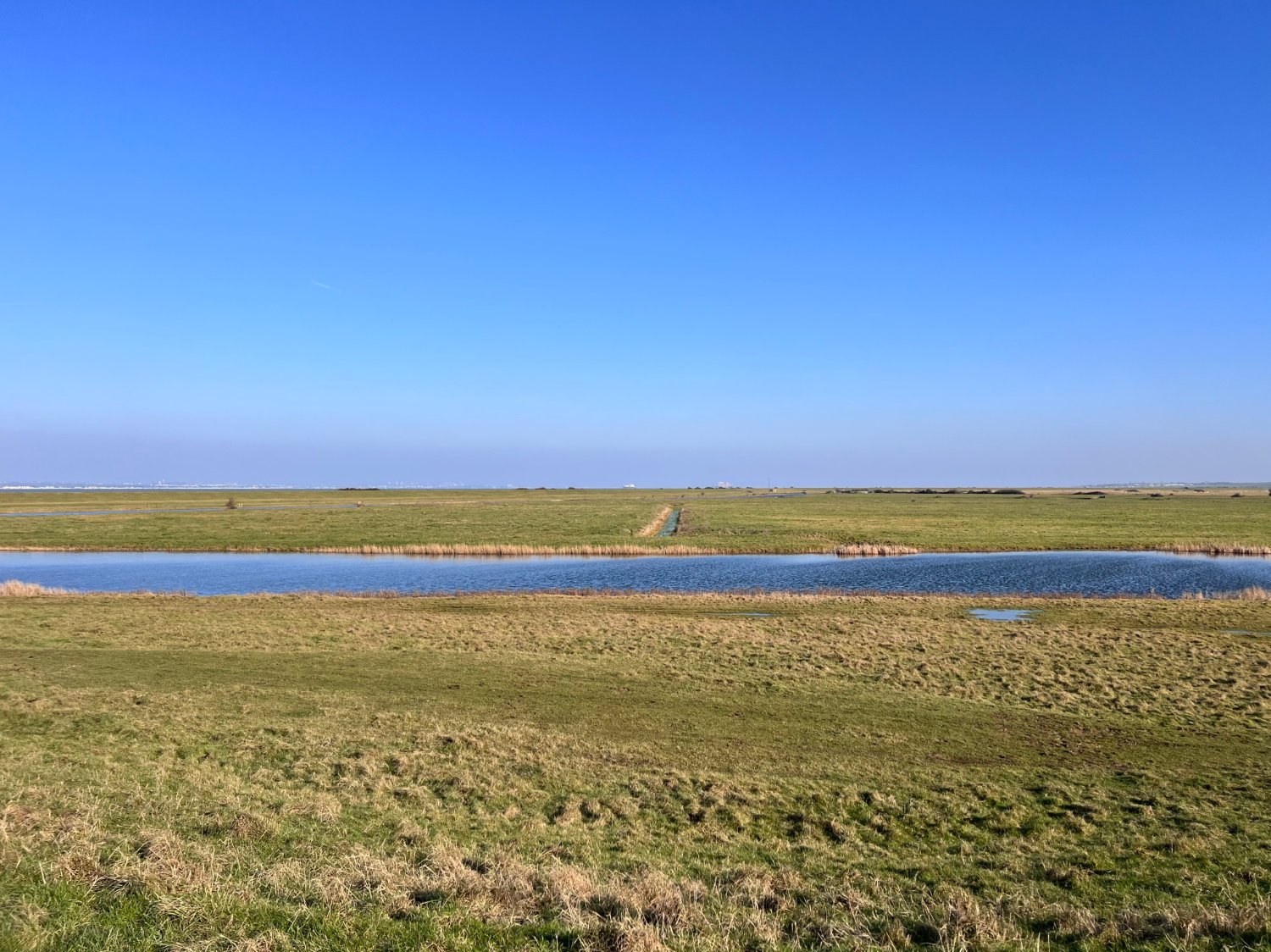
Ride practicalities
Note that OS maps mark two parts of this ride as ‘footpaths’. Whilst this website does not encourage cyclists to break the law, the designation of cyclepaths is problematic in England. The Military Canal path from Gravesend is marked as a footpath, yet not only is cycling permitted, it is encouraged since it is part of the National Cycle Network. The suggested route along the Cliffe Marshes is also marked as a footpath - however it is a wide and little used track behind the seawall. I have encountered RSPB wardens and others who have not challenged me. Ride with respect, shut all gates and should you meet someone, a smile and a greeting should be all you’ll need to proceed without challenge. If there are any issues, please use the comments section below, or email me info@wheremywheelsgo.uk
START/FINISH: Gravesend DISTANCE: 64km TOTAL ASCENT: 366m TERRAIN AND SURFACES: Often rough grass tracks and fast gravel roads, interspersed with very quiet country lanes. A good ride for a gravel/hybrid bike RECOMMENDED CAFÈS/PUBS: Gravesend; Marie’s Tea Room, Upnor; The Tudor Rose NEARBY MAINLINE TRAIN SERVICES: Gravesend PLACES TO VISIT; The wild open marshes of the Hoo, Shornemead fort, Cliffe Fort, Cliffe and Cooling churches. LINKS TO OTHER RIDES: London to Rochester via the Hoo NCN 1 Dover to London
the wind and the terrain make this a ride for a more experienced rider who is used to a variety of surfaces.
Ride Notes
After 35 minutes on a train from St. Pancras, you’re in Gravesend and cycling down one of the loveliest high streets in Southern England. It’s a narrow medieval road lined with a mix of brick and weatherboard buildings, and many independent shops including Marie’s Tea Room which makes for an excellent fuelling stop. After some coffee, freewheel down to Britain’s oldest wrought iron pier where passengers in Victorian times disembarked on their day trips from London.
One of the constants of the ride are the forts which were built to protect London from sea-bourne invasions. The estuary was of great strategic importance - up to 80% of England’s trade passed along the river and the dockyard at Woolwich, the powder magazines at Purfleet and the shipyards at Deptford were all key targets for invaders. Before you’ve completed the second mile, you’ll have passed Henry VIII’s blockhouse and the Victorian New Tavern Fort. The latter is a well preserved estuary fort with many of its guns still in place.
Out of town, the riding begins in earnest. The path beside the Thames and Medway Canal has been resurfaced and the first five kilometres are on smooth tarmac. The canal, which is no longer used as a safe passage for ships linking the Medway and Thames estuaries, is home to much wildlife. There are willow warblers and a host of relatively rare songsters to sing you on your way.
Shornemeade Fort
Around kilometre 5.8, there’s a track heading directly to the Thames. It would be easy to miss out Shornmead Fort, since it’s a three kilometre there and back off the main route, but that would be a mistake. This ride is as much about atmosphere as it is about grinding away into the wind on tough gravel paths. The forts - this is one of several - which hunker along the banks of the estuary, were designed by General Gordon - he of Khartoum fame - to protect the approach to London. It is positioned at a point where the Thames curves sharply north and west, giving the fort long views up and downriver in both directions. The ground beneath its thick walls is marshy and the fort suffered from significant subsidence, so much so that it could not house the high calibre guns that it was designed for. It has been partially dismantled, adding to its strange and brooding atmosphere. The thick walls still remain, the gun ports are heavily sprayed with graffitti, and the local lads and lasses have created a challenging mtb/bmx course which, when ridden on a gravel bike, is even more exciting. The views across the wide, grey river to Coalport Fort on the Essex shore are fabulous.
The boundary of the Rochester and London Water boards
Return along the same gravel track to the canal. The track becomes a lonely lane with the occasional out of town industry - asbestos solutions, car reconditioning, gravel pits. Yet for all that, it’s an empty place haunted by willows and reeds. You ride past an obelisk which marks the boundary of jurisdiction between rival waterboards.
Ships and broken lights - the drama of the estuary
Past Lower Higham, take the left turn towards Cliffe Pools. Trip Advisor describes Cliffe as, ‘A nature reserve for nature, rather than visitors’.Created from old gravel pits, the pools are filled with birds, including it is said, flamingos, although in all the times I have been here, I’ve never seen one. You might have come for the birds, but more likely for the sometimes bleak and inhospitable marsh lands which surround the pools. Ride the fast and flat gravel tracks around them, and head towards the sea wall which curves around the bend of the Thames. Ahead and across the river, you’ll see the cranes of the DP London Gateway Port, one of the largest in the UK. This juxtoposition of industry and windswept salt marsh is brilliant. it is the reason why you are here. Far from the city, as remote as you can be without marching down a distant Scottish glen. I absolutely love it and hope you will too.
Some of the best gravel riding in Southern England
The cycling along the wide track beneath the sea wall is some of the best in southern England. The sky above you is huge, the wind tugs you, your bike bounces happily along. Stop from time to time to climb the bank and watch the surreal cranes at the London Gateway Port unload containers from some of the world’s largest ships. It is the oddest of experiences to be surrounded by wild sea marsh, whilst opposite you, is one of the world’s most sophisticated ports. You ride past various bays, where in Victorian times, old wooden warships were docked and converted into prison hulks. Time spent on them was akin to a death sentence. Charles Dickens, amongst others, vigorously campaigned against their use and as a result new prisons were built around London including the ‘model’ prisons of Wormwood Scrubs and Wandsworth. On your right are various walls standing incongrously in the salt-marsh fields. These are blast walls, remnants of a weapons and explosive testing area.
The sea wall and a lonely elder tree
One thing to note, is that there are gates, some of which are locked, meaning that you will have to lift your bike over them, or else ride on the narrower footpath beside the sea wall. The latter is the best solution for beside the wall are the best views. Technically, this section of the ride is all on footpaths, which means being on a bike is not permitted. However, in law, only the landowner can prosecute you and they’d have to show that you were causing ‘wilful damage’. In the many times that I have been here, I could count the people I’ve met on the fingers of one hand. The other thing to note, that this is arguably the best area near to London for wild camping. To spend a night here is a wonderful experience with the ghostly sounds of the London Gateway port, the screeching of owls, the silence of the moon and the deep thrum of passing ships. As ever be discreet and leave no trace.
The old gunpowder sheds
Gunpowder was a key feature of the Hoo Peninsula, it being both stored and made on the peninsula. The sheds across the marshes are relics of the explosive times. And as for the riding, come here in winter after heavy rain and the going becomes soft, not muddy so much, just soft, requiring you to push hard on the pedals. In summer it’s altogether different, hard and fast. And bumpy.
These marshes are raptor country. Marsh harriers are on constant patrol, and you may also see a selection of barn owls, tawny owls, little owls, and short-eared owls. The pools host large flocks of overwintering birds, including shimmering clouds of avocets.
After around 10km, you turn off up a farm track towards Swigshole - what a name for a farm! - and after a short steep climb followed by a stretch beside a busy road (which for the most part has a protected cycle lane), you turn down Roper’s Green Lane, another gravel/mud track across fields. There are great views from here towards the Medway as well as the towers and chimneys of Kingsbridge power station. Once you’re in Hoo St. Warburgh, roads lead you uphill to Chattenden, before a protected cycle lane speeds you down to Upnor.
The Tudor Rose
The Tudor Rose is part of the Hoo experience. At the end of the village of Upnor’s cobbled street in up, this traditional pub will feed you and Kentish beers quench your thirst. Leaving the pub, you follow the signs for NCN 1 into Rochester, which includes one of the steepest downhills on the whole of the National Cycle Network. Back on the flat, riding beside the Medway, you’ll see a black submarine moored in the Medway. It’s Russian. How it came to be here is filled with rumour and good pub tales. Facts are left to the imagination.
Rochester, with its castle and cathedral, is one of England’s most underrated cities. If there’s time before your train back into London, take a wander around.
Every route on this website has been carefully researched as well as ridden. However situations on the ground can change quickly. If you know of changes to this route, or cafes, pubs and the like which you think other cyclists need to know about, feel free to share your thoughts below.
If you enjoyed this guide, why not subscribe to the website so as not to miss other inspirational routes?
wheremywheelsgo.uk is a Feedspot UK Cycling top website

